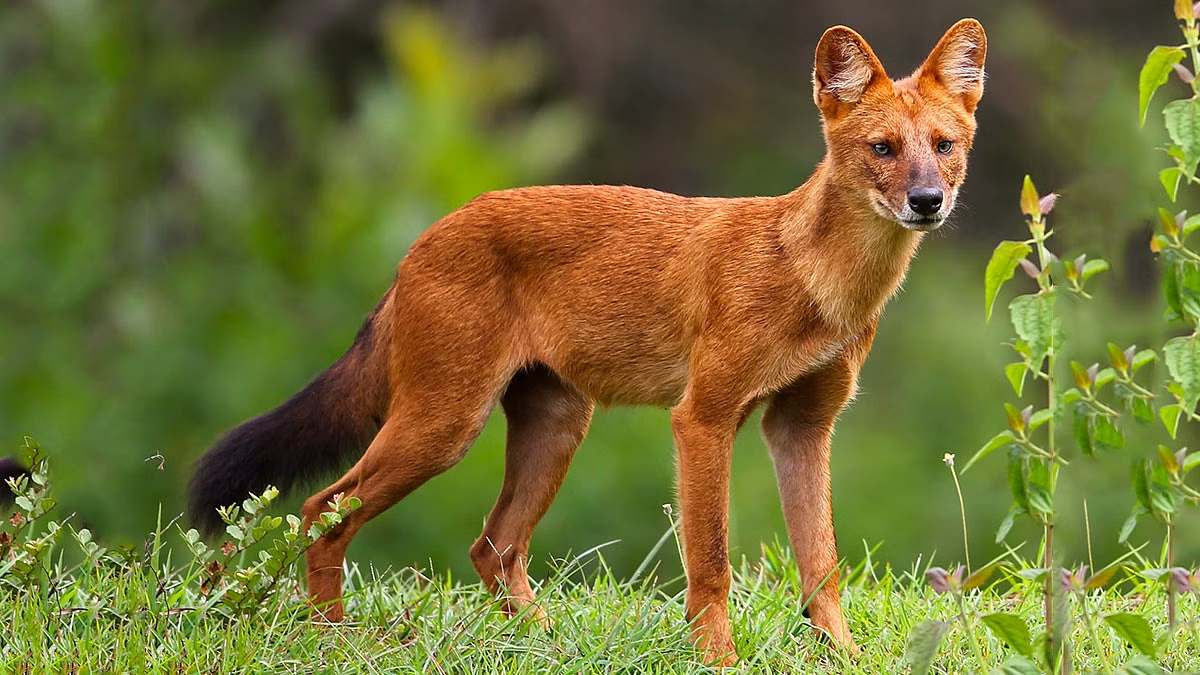Important Facts For Prelims
Coexistence of Tiger and Asiatic Wild Dog
- 11 Oct 2023
- 4 min read
Why in News?
In a recent study titled 'Do dholes segregate themselves from their sympatrids? Habitat use and carnivore co‑existence in the tropical forest,' researchers have unveiled fascinating insights into the coexistence dynamics between dhole or Asiatic wild dog (Cuon alpinus), and tigers within Assam's Manas National Park.
- This study delves into the factors that shape this unique carnivore relationship, providing valuable insights into their interactions and habitat preferences.
What are the Key Highlights of the Study?
- The study conducted in Assam's Manas National Park revealed a surprising positive relationship between dholes (Asiatic wild dogs) and tigers, challenging previous assumptions of antagonistic interactions.
- The positive association between dholes and tigers may be attributed to overlapping prey availability or habitat suitability, suggesting a more complex ecological dynamic at play and prompting the need for further research.
- The research found that the activity of dholes had the highest temporal overlap with leopards and the lowest with clouded leopards (Neofelis nebulosa).
- This study highlights the Manas National Park’s conservation significance, as dhole populations face fragmentation due to habitat loss, declining prey availability, persecution, disease, and competition with other species.
Dhole
- About:
- Dhole (Cuon alpinus) is a wild carnivorous animal and is a member of the family Canidae and the class Mammalia.
- Habitat:
- Dholes, historically widespread across southern Russia to southeast Asia, are now mainly found in south and southeast Asia, with northern populations in China.
- In India, they are clustered in the Western and Eastern Ghats, central India, and northeast India, with Karnataka, Maharashtra, and Madhya Pradesh playing a crucial role in their conservation, according to a 2020 study.
- Conservation:
- Wildlife Protection Act, 1972: Schedule 2.
- International Union for Conservation of Nature's Red List: Endangered.
- The Convention on International Trade in Endangered Species of Wild Fauna and Flora (CITES): Appendix II.
- The creation of reserves under Project Tiger provided some protection for dhole populations sympatric with tigers.
- In 2014, the Indian government sanctioned its first dhole conservation breeding center at the Indira Gandhi Zoological Park (IGZP) in Visakhapatnam.
Manas National Park
- It is a national park, Project Tiger Reserve, an elephant reserve and a biosphere reserve in Assam, India. It borders the Royal Manas National Park in Bhutan.
- It was declared a national park in 1990 and earned the badge of UNESCO World Heritage Site in 1988.
- Manas National Park is home to a varied species of Fauna of the likes of the Indian One Horned Rhinoceros, Asiatic Elephants, Tigers, Clouded Leopards, Hoolock Gibbons, etc.
UPSC Civil Services Examination, Previous Year Question (PYQ)
Q1. Consider the following protected areas: (2012)
- Bandipur
- Bhitarkanika
- Manas
- Sunderbans
Which of the above are declared Tiger Reserves?
(a) 1 and 2 only
(b) 1, 3 and 4 only
(c) 2, 3 and 4 only
(d) 1, 2, 3 and 4
Ans: (b)








